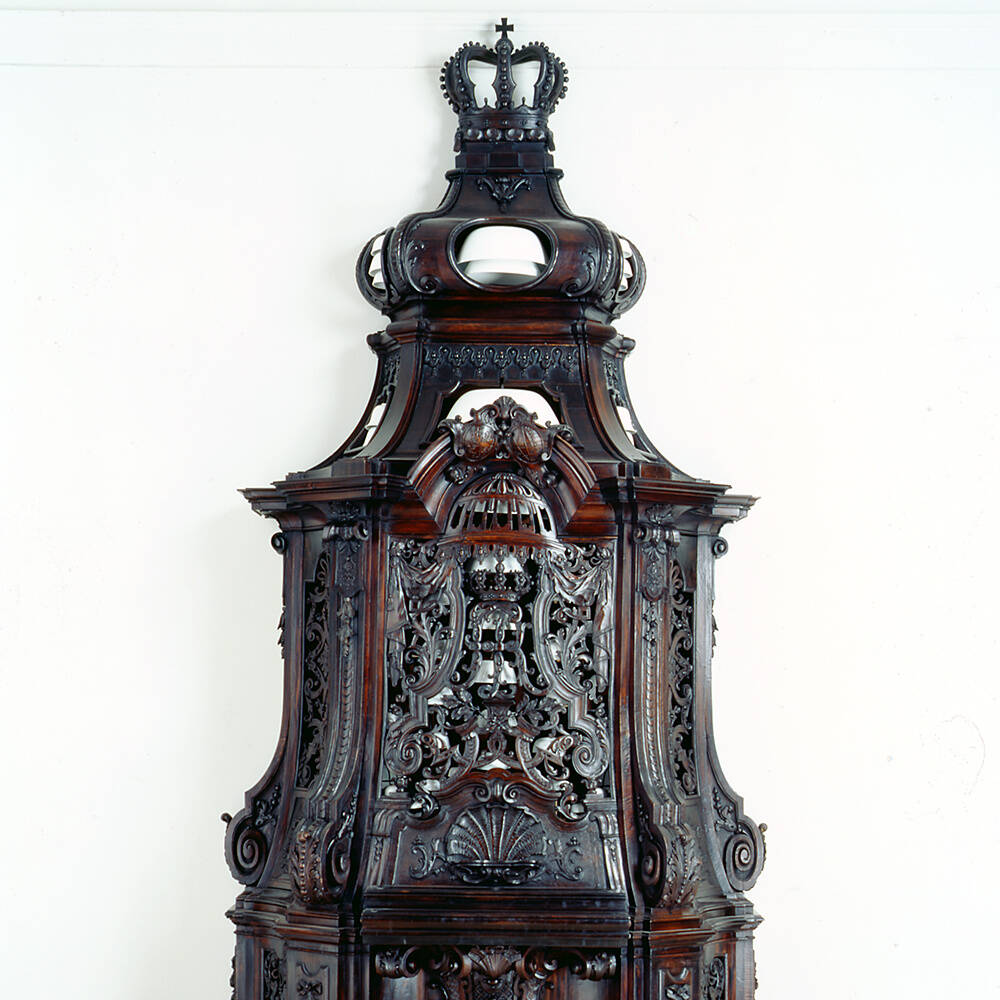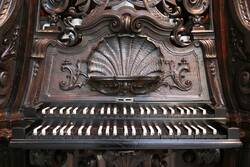How does porcelain sound? Travellers’ accounts described a wide range of porcelain instruments made for the Imperial court in China. Of course, that awoke Augustus the Strong’s own desire to have a porcelain carillon for his Japanese Palace, which housed his porcelain collection. The carillon casing was designed by his court architect Pöppelmann, the Zwinger master builder. Kaendler in Meissen provided the porcelain bells, and the mechanism to play the carillon was created by organ builder Johann Hähnel. And did it work? Find out for yourself!
Further Media
Now, listen to Handel’s Sonata in C major played on the carillon. The piece lasts around five minutes.
- Location & Dating
- Meissen, 1736-1738, bells: mid-18th century till late 19th century
- Material & Technique
- Porcelain, wood, metal
- Dimenions
- H. 395 cm, B. 193,5 cm, T. 82,0 cm
- Museum
- Porzellansammlung
- Inventory number
- PE 706


